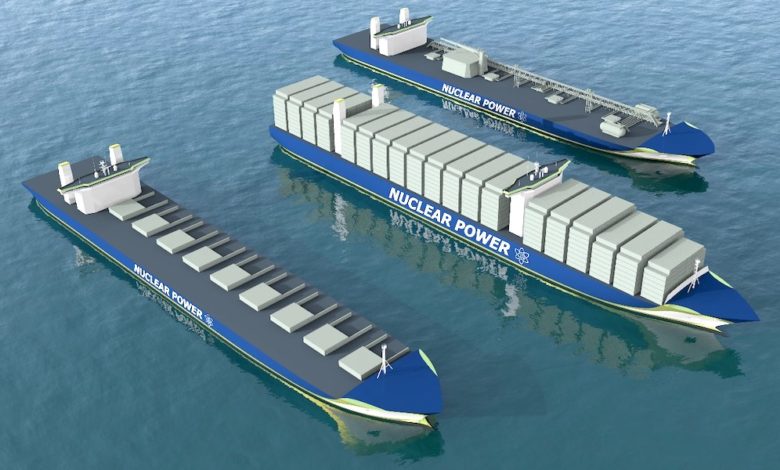The Dawn of Nuclear Power in Commercial Shipping
There’s a notable buzz in the maritime world as Lloyd’s Register (LR), a leading British class society, sets out a detailed roadmap for incorporating nuclear energy into commercial shipping. The guidelines focus on safely and responsibly integrating nuclear propulsion, highlighting a potential game changer in sustainable maritime transport.
A Collaborative Framework for Nuclear Maritime Operations
Developed jointly with Global Nuclear Security Partners (GNSP) and insurer NorthStandard, this framework—titled Navigating Nuclear Energy in Maritime—addresses the full spectrum of nuclear propulsion considerations. This includes regulatory approval processes, technical designs, insurance challenges, and essential crew training.
The roadmap is aimed at shipowners, operators, and regulators, providing not just a blueprint for compliance but a foundation for innovation in clean shipping technologies.
Why Nuclear, Why Now?
As the shipping industry grapples with the urgent need for carbon-neutral solutions, nuclear power, especially the use of small modular reactors (SMRs), emerges as a promising alternative. Deep-sea vessels, which demand long-range and reliable propulsion, could particularly benefit from nuclear power’s near-zero-emission footprint.
Yet, the waters are still uncharted internationally—there is no unified global regulatory framework governing nuclear propulsion in commercial shipping. LR highlights the necessity of aligning maritime regulations with nuclear standards to ensure safety, liability clarity, and environmental protection.
The Regulatory Landscape: IMO and IAEA in Focus
The guidance underscores the critical roles of the International Maritime Organization (IMO) and the International Atomic Energy Agency (IAEA). It emphasizes harmonizing maritime safety classifications with nuclear safety practices, covering aspects such as:
- Environmental impact assessments
- Structural integrity of vessels
- Development of comprehensive nuclear safety cases
- Physical and cybersecurity measures to protect sensitive operations
Addressing Operational and Financial Hurdles
Beyond technical and regulatory measures, practical aspects also take center stage. The guidance touches on:
- Qualifications and continuous training for onboard personnel
- Emergency response plans tailored for nuclear-powered ships
- Insurance frameworks, where NorthStandard points out current gaps, especially the limitations of Protection & Indemnity (P&I) clubs regarding nuclear-related risks
These elements reflect a thorough approach, intertwining safety, financial stability, and operational readiness to foster confidence in nuclear shipping ventures.
Industry Voices and Future Prospects
Mark Tipping, Lloyd’s Register’s global power-to-X director, stresses that nuclear energy could become a “scalable and zero-carbon” game changer for the maritime sector. Achieving this, however, demands tight collaboration between regulators, ship operators, insurers, and wider society.
Building on previous research such as LR’s Fuel for Thought: Nuclear, this roadmap offers early adopters a compass to navigate the minefield of technical, safety, and financial complexities.
The Potential Role of Nuclear Shipping in Logistics
While the concept of nuclear propulsion in commercial shipping still seems like science fiction to some, its successful implementation could reshape global logistics. Deliveries, freight forwarding, and international haulage might see profound benefits:
| Aspect | Potential Impact of Nuclear Propulsion |
|---|---|
| Emission Reduction | Drastic cuts in greenhouse gases enhance sustainability credentials across shipping portfolios. |
| Üzemanyag-hatékonyság | Longer voyages without refueling reduce downtime and operational costs. |
| Megbízhatóság | Nuclear propulsion offers steady power output, critical for scheduled delivery and supply chain stability. |
| Insurance and Risk Management | New risks demand updated insurance products and liability frameworks. |
Integrating nuclear propulsion would require logistics companies to rethink fleet management, risk assessment, and regulatory compliance. Services like GetTransport.com can play a pivotal role by adapting to such forward-looking transport methods.
Why Personal Experience Trumps Reviews
Of course, no amount of glowing guidelines or expert insights can substitute for firsthand experience. Whether nuclear-powered vessels become everyday heroes on the shipping routes remains to be seen.
Platforms such as GetTransport.com make it easier for cargo owners to tap into diverse transport options worldwide, ensuring access to reliable freight, haulage, and shipping services that meet evolving safety and environmental standards — all while keeping affordability in check.
The transparency and convenience offered by such platforms empower decision-makers to weigh options wisely without breaking the bank or running into unexpected snags. Foglaljon fuvart a címen GetTransport.com and stay ahead in the logistics game.
The Road Ahead for Nuclear Propulsion in Shipping
In terms of global logistics, nuclear propulsion’s immediate influence might be modest, given the novelty and complexity of the technology.
However, its potential to unlock zero-emission long-haul shipping remains significant in a climate-conscious market.
For a cutting-edge logistics provider like GetTransport.com, keeping pace with emerging trends such as nuclear-powered vessels ensures offering clients the best, most sustainable transport solutions available.
Kezdje el tervezni a következő szállítást, és biztosítsa rakományát a GetTransport.com segítségével.
Wrap-Up: Charting a New Course in Shipping and Logistics
To wrap it all up, Lloyd’s Register’s roadmap on nuclear-powered shipping signals the maritime industry exploring bold, sustainable pathways. Nuclear propulsion, especially with advancing technologies like small modular reactors, could revolutionize fuel efficiency and emissions in deep-sea freight.
The journey involves navigating complex layers of regulation, safety, crew training, insurance, and environmental responsibility. While practical challenges remain, collaborative efforts highlighted in the guidance offer a promising framework for early movers.
From freight and parcel delivery to the movement of bulky and international cargo, such innovations will inevitably trickle into the broader logistics ecosystem.
Platforms like GetTransport.com complement this evolution by providing efficient, reliable, and affordable global transportation options that meet modern logistical demands. Whether for house moves, office relocations, or international freight forwarding, having flexible transport solutions at your fingertips is priceless in a world constantly on the move.

 Lloyd’s Register Unveils Comprehensive Guidance for Safe Nuclear-Powered Commercial Shipping">
Lloyd’s Register Unveils Comprehensive Guidance for Safe Nuclear-Powered Commercial Shipping">